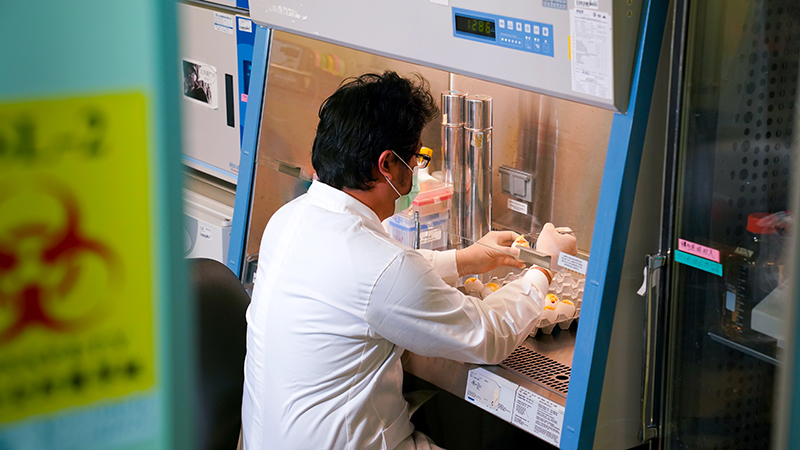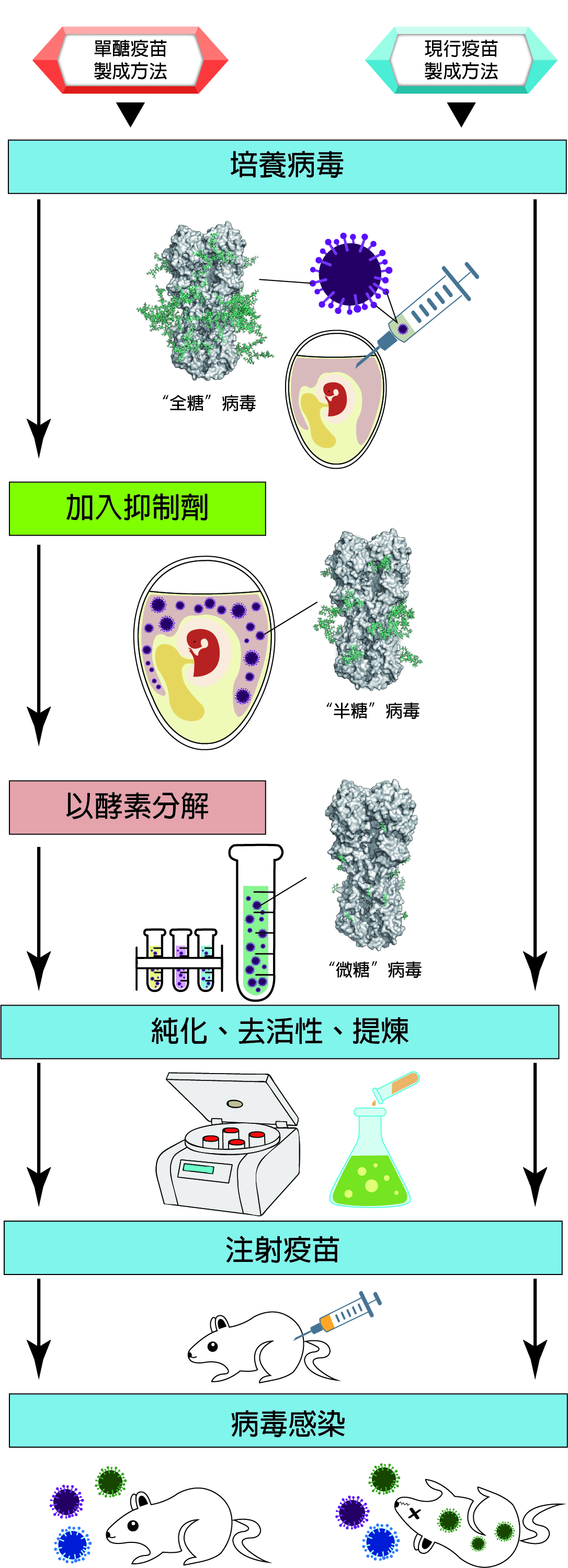For almost a decade, the research team’s searching for an ideal influenza vaccine has been one of the most important research aims in GRC. Now, they have come one step closer to achieve the dream, a whopping three to four times more effectiveness against conventional vaccines has been observed. Their newest development is reported in an article in the latest PNAS journal.
By leveraging the conventional egg-based flu vaccine production method, they have demonstrated a ready-to-be-used solution of which their newer and better strategy in giving a maximal protection with a minimal modification. Health care providers can finally be more at ease, no more risks of vaccines made out of wrong predictions. The technology has already obtained multiple patents worldwide and been tech transferred to a pharmaceutical company through Academia Sinica’s Department of Intellectual Property and Technology Transfer.
Ever since the first Type A flu vaccine was developed more than 70 years ago by US physician scientists Thomas Francis Jr. and Jonas Salk, the influenza vaccine has evolved into quadrivalent protections, meaning a vaccination shot gives you the protection against two strains of type A flu and two strains of type B flu. However, that still does not solve the basic issues in this ordeal. Nature’s evolution makes this task really hard by constantly changing the gene sequences to create new strains of influenza viruses. And with the current method of egg-based vaccine, you never know if by the time the vaccines are out in the market after six months of manufacturing work, the circulating viruses are not already morphed into a different run-away kind. A slight change of the targeting strain can yield a whole new strain within the same sub-type flu, for example H1N1, and the current vaccines have very questionable effectiveness against cross strain viruses.

|
| Making monoglycosylated influenza vaccine in P2 Lab |
In years of studies, researchers led by Dr. Chi-Huey Wong and Dr. Che Ma have shown that the monoglycosylated HA (HAmg) protein vaccine is a cross-strain influenza vaccine which can induce more neutralizing antibody to give better protection against a lethal dose of virus infection from strain-specific and cross-strain H1N1 viruses. Lab result shows a three to four times of protection rate against market available vaccines.
HA is a major virus surface glycoprotein that is responsible to grab host cells for the in-fluenza virus. The key to the potency of this new vaccine lies at the strategy in playing with the glycans on the surface of the HA protein. Prior findings showed that in the mushroom like core structure of the HA protein, abundance of glycans are found at-taching to its surface. By removing these glycans and only keeping a single mono-sugar, therefore, named as HAmg (monoglycosylated HA), and by a way to split the HAmg virus to remove its infectivity and then inject into the host, the immune response ap-pears to be much more effectively induced. The immune system will no longer be fooled by the glycan camouflage on the surface of virus and thus to make antibodies with focus to fight off the intrusions.

|
| Egg-based mono-glycan flu vaccine vs. traditional flu vaccine |
The researchers also found that the resulting antibodies can target the stem area of the HA protein, making it a powerful strike. It is also very interesting to have observed an enhancement of the antibody-dependent cellular cytotoxicity (ADCC) against influen-za-infected cells.
As in Dr. Ma’s comment, “This is a simple and practical egg-based procedure that can provide protections against cross-strain influenza infections”. Let us hope that “Flu sea-son” can someday become a historical memory!
This paper entitled “An egg-based influenza split virus vaccine with monoglycosylation induces cross-strain protection against influenza virus infections” was published in PNAS on xx xx, 2019. The main leaders of this project include Dr. Chi-Huey Wong, Dr. Che Ma, Dr. Kuo-I Lin and Dr. Jia-Tsrong Jan, all from Genomics Research Center. The first author Dr. Yung-Chieh Tseng is a postdoctoral researcher in GRC as well. The full article can be accessed from the following website: https://www.pnas.org/content/early/2019/02/12/1819197116


